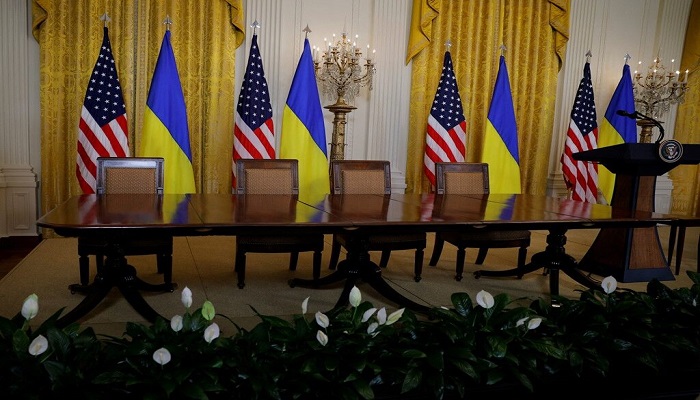PNN – The failure of the negotiations between Donald Trump and Volodymyr Zelenskyi, the presidents of the United States and Ukraine, in the White House, has made the deep gaps in the transatlantic relations more obvious and has put the European leaders at a fateful crossroads.
According to the report of Pakistan News Network, for Ukraine, the recent tensions with America are considered a turning point in the country’s three-year war. Zelensky, who had previously counted on Washington’s absolute support, is now facing the first signs of a change in the Trump administration’s approach.
In a controversial White House meeting, Trump accused the Ukrainian president of “disrespecting America” and said he was not ready for peace. Zelensky, who had traveled to Washington to sign an agreement on Ukraine’s mineral resources, left the White House without reaching a specific result.
Now the key question is whether Kiev is willing to give in to Trump’s demands to regain Washington’s support. Trump previously asked Ukraine to take the “path of peace”, but it is not clear what fate this path will end up in. Accepting this path may mean conditions that Ukraine does not consider desirable.
Europe; between commitment and doubt
European leaders announced their support for Zelensky immediately after the White House tensions. French President Emmanuel Macron emphasized that Europe will stand by Ukraine, and German Chancellor Olaf Schulz spoke of the need for a common solution for a “sustainable and just peace”. But to what extent can Europe’s verbal reactions help?
Europe’s biggest challenge has always been that there has been a gap between political statements and practical actions. Now the main question is whether Europe will be able to provide an independent solution to end the war in Ukraine.
Can the European Union create a stable security mechanism for Ukraine without the direct support of the United States? The meeting of European leaders in London, which is scheduled to be held on Sunday, can provide an answer to these questions.
Read more:
America; Trump’s “terms and conditions” policy
On the other hand, the Trump administration has clearly shown that it does not intend to support Ukraine without obtaining certain concessions. After a tense White House meeting, US Secretary of State Marco Rubio defended Trump’s position, saying he was a “dealer” and would not allow Washington to get caught up in “a bad deal”. He accused Zelensky of “derailing” efforts to achieve peace.
Trump, who left the White House for Florida after the meeting, emphasized that the final decision on the war in Ukraine was up to Zelensky himself and that he should “accept the terms of peace.” This stance has caused serious concerns in Europe, because it could mean more pressure on Ukraine to back down from its positions.
Meanwhile, Russia seems to be the biggest winner of recent developments. Maria Zakharova, the spokeswoman of the Russian Foreign Ministry, said in a statement referring to the events that happened in the meeting between Trump and Zelensky in the White House and said: How Trump and J.D. Vance, the vice president of the United States of America, restrained themselves and did not punch and kick the life of this murderer (Zelensky), shows the miracle of the power of self-restraint. Russian media also welcomed the “unprecedented gap” in the Western camp, and some Russian analysts see these developments as a sign of weakening the position of Ukraine’s allies.
Europe in a decisive test
Now, the rift between Washington and Kiev has made the prospect of a war in Ukraine murkier than ever. Trump has put Zelensky in a dilemma; he must either give in to the White House’s terms for peace, or continue an attrition war by reducing American support. In Europe, the leaders are trying to adopt a unified and effective position, but it is still not clear how effective this position will be.
The meeting of European leaders tomorrow in London and Thursday in Brussels will be a turning point in Europe’s decision on the war in Ukraine. Will Europe separate its path from Washington and provide an independent solution to support Kiev? Are European countries ready to accept the costs of increasing military support for Ukraine? Or will they continue on their path in the shadow of America’s shaky policies, without a clear plan for the future?
These developments have put not only the future of the war in Ukraine, but also the fate of the transatlantic alliance in an aura of uncertainty. Europe has to decide whether it will continue to follow the US policies, or whether it will step on the path of strategic and security autonomy for the first time.

